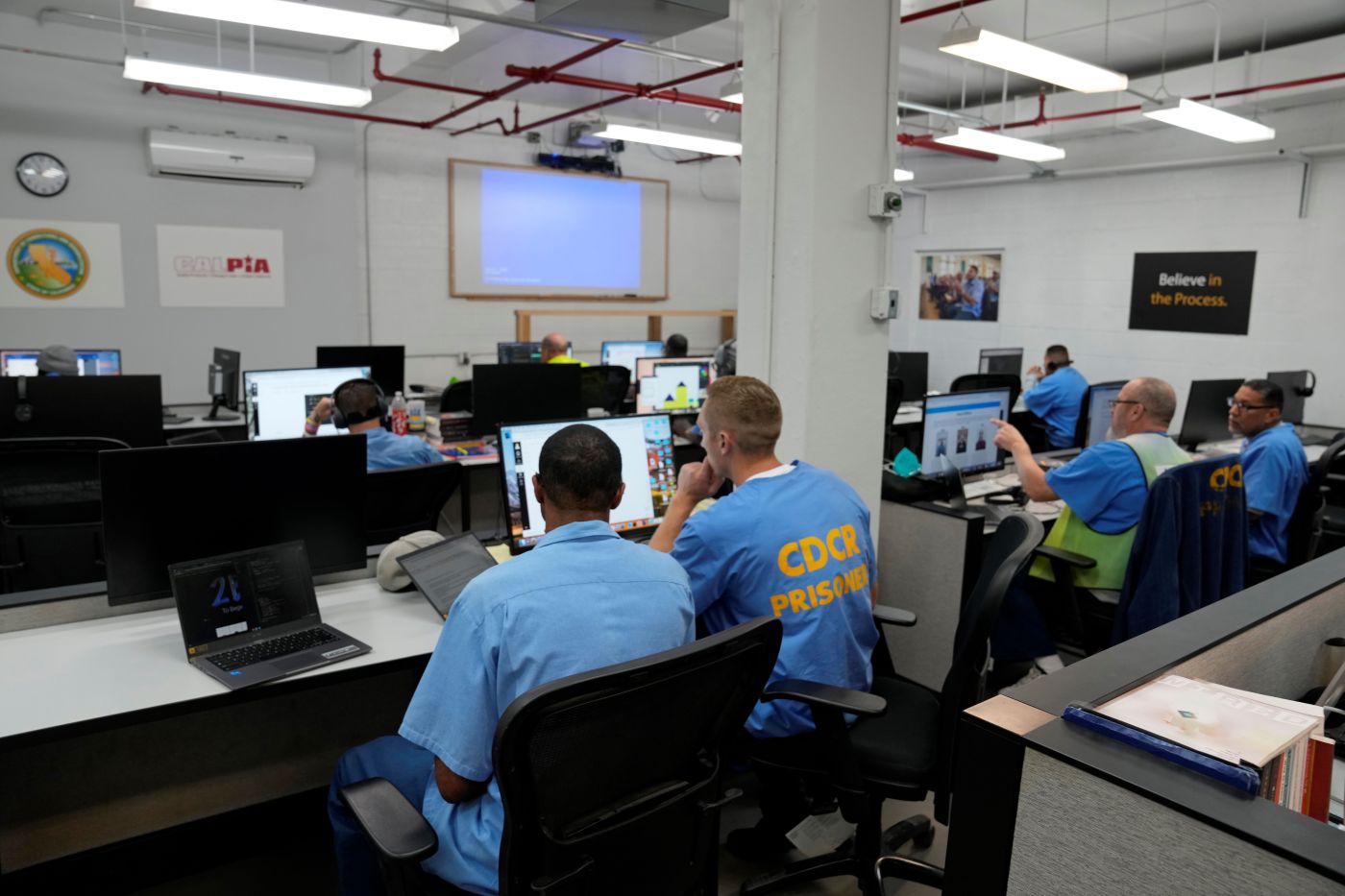
Gaskin: Technology can transform post-prison futures
The internet has changed our world so much that it has become rare to see music stores, retail brokerages, or travel agencies in our neighborhoods. People can now access health care, counseling, and exercise via online platforms. The pandemic inspired many companies to rethink the pros and cons of remote work, while colleges have increased their investments in online learning and developed new business models. But one thing that hasn’t changed is how we use technology to educate and prepare incarcerated individuals for success as returning citizens.
If we can find ways to reclaim glass, plastic, and aluminum, we should also be able to reclaim the human capital warehoused in prisons. With all the technology-facilitated changes in the worlds of work and education, now we can.
Online educational platforms are transforming traditional education by removing the barriers of cost, location, and distance. Students can take massive open online courses (MOOCs) and interactive online classes from schools such as Harvard University and MIT in a large variety of subjects, including law, history, science, engineering, business, computer science, public health, and artificial intelligence. By the end of 2021, some 19,400 MOOCs had been announced or launched by nearly 1,000 universities worldwide. Many top companies offer classes through such platforms as well. These courses are free, and some colleges offer verified completion certificates for a small fee.
Making these online courses available to those behind bars could completely transform existing workforce development and reentry strategies.
Globally, nearly four in five employers report that it is difficult to find the skilled talent they need. Workbay is a platform designed to address this supply and demand mismatch, with a special focus on those in prison. Mount Tamalpais College — formerly the Prison University Project and Patten University at San Quentin — is an independent liberal arts college dedicated to serving incarcerated students. And it is looking to expand nationally.
In 1994, the Violent Crime Control and Law Enforcement Act barred incarcerated people in the United States from receiving Pell Grants. This legislation effectively ended prison higher education across the country. In 2015, the Second Chance Pell Experiment restored some access through a limited pilot program. Now, thanks to the FAFSA Simplification Act, individuals enrolled in approved prison education programs are once again widely eligible for federal Pell Grants.
With the widespread availability of remote work today, it’s time to train inmates for jobs they can start while still behind bars. Then, after release, they will have viable employment and might even have saved up enough money for a deposit on an apartment. This would address two of the most pressing needs for returning citizens: employment and housing.
Students could work as coders, day traders, graphic artists, accountants, or most white-collar work, and learn many of the jobs currently done online by people around the world. Work offered on sites such as Upwork or Fiverr could be performed by inmates.
The Massachusetts Department of Corrections has started rolling out tablets for use by inmates. Currently, all DOC tablet content is preloaded educational or self-enrichment programming, vendor programming, or content from the National Corrections Library, such as TED talks. There is no charge for use, but inmates don’t have access to the internet; instead, they are connected to a secure network. In some — but not all — housing units, inmates are allowed to keep the tablets on their persons.
The increased use of technology behind bars offers many potential benefits, but it does require caution and forethought regarding appropriate usage. Safeguards and monitoring may be necessary to ensure that the technology is used fairly, effectively, and appropriately to prepare prisoners for successful reentry to their communities.
Here are some other ideas for prudent implementation:
Increase the availability of self-service resources
More self-service resources can be made available online for inmates and newly returned citizens. Reduced reliance on human intervention from third parties, when feasible, would decrease costs and improve access. Online self-service options may also promote greater agency among inmates. A program to help inmates identify their primary reentry challenges and learn about available resources to address their specific needs would enable them to devise their own reentry plans with input from staff. Access to the Coming Home Directory. Educational, “How-to’s” and hobby content, life, and spiritual development programs would also be helpful.
Provide families of inmates with electronic access to resources
Online resources can help family members affected by the incarceration of a loved one. Access to online resources could help families better advocate. Families could also learn about the reentry process and the typical challenges inmates face upon release. Online access to such information would prepare family members for what to expect and explain how they can provide support.
Explore virtual options for mental health services
A high proportion of inmates struggle with mental health and substance abuse issues. Some experience additional trauma or struggles during incarceration. However, state prisons and jails have limited capacity to address mental health and substance abuse issues. Reliance on internal resources also means that treatment is disrupted when prisoners go home. The pandemic has forced healthcare providers to greatly expand online access to mental health resources. These resources could be adapted to help individuals while they are incarcerated and during reentry.
Consider remote options for workforce development and education
Although some prisons already have job training programs, they aren’t necessarily tailored to the current workforce environment. It’s essential for inmates to acquire in-demand skills that will enable them to work remotely and earn a living wage.
One Massachusetts prison recently initiated a computer coding training program. Online training programs in this and other fields, such as software testing, paralegal services and graphic design, could begin in prison and lead to meaningful remote work opportunities after release.
Enable virtual visits with family members, mentors and spiritual advisers
The pandemic severely restricted visitation in prisons. Transportation challenges and geographic distance also hinder visitation. Research has shown, however, that visitation can improve the likelihood of successful reentry, so enabling virtual visits may be beneficial.
Using technology for this purpose raises concerns about exploitation, as with the high rates inmates are often charged for phone calls. There is also the danger that the technology could offer a rationalization for reducing or eliminating other services, such as access to the law library, physical books, and postal mail. Remote options should complement existing options, not replace or limit them.
The corrections system is not known for innovation, but technology such as tablets could be a game changer if advocates stay engaged to ensure they are used appropriately to increase the success of returning citizens.


